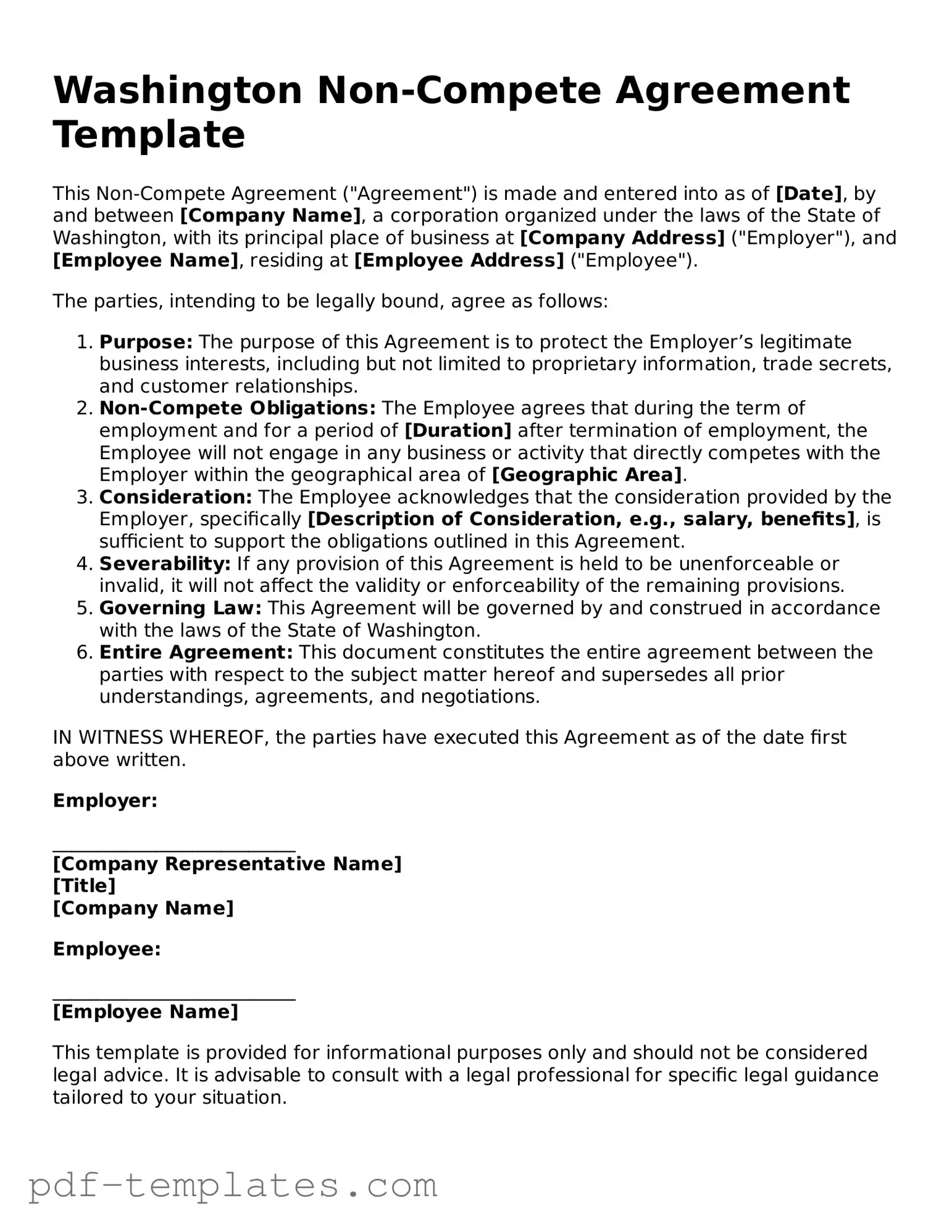The Washington Non-compete Agreement form shares similarities with the Non-disclosure Agreement (NDA). Both documents aim to protect sensitive information and business interests. While the non-compete focuses on restricting an employee's ability to work in a competing business, the NDA prevents the sharing of confidential information learned during employment. Each document serves to safeguard a company's proprietary information and trade secrets, ensuring that employees do not misuse their knowledge for competitive advantage.
Another document akin to the Washington Non-compete Agreement is the Employment Agreement. This agreement outlines the terms of employment, including job responsibilities, compensation, and duration of employment. Similar to the non-compete, it may contain clauses that restrict an employee's actions post-employment. Both documents create a framework for the employer-employee relationship, establishing expectations and limitations that protect the employer's interests.
The Confidentiality Agreement is also comparable to the Washington Non-compete Agreement. This document specifically addresses the handling of confidential information. While the non-compete restricts employment opportunities, the confidentiality agreement focuses on preventing the disclosure of sensitive information. Both agreements aim to protect the employer's intellectual property and maintain a competitive edge in the market.
A Partnership Agreement shares similarities with the Washington Non-compete Agreement in that both can include restrictions on competition. A partnership agreement outlines the terms of the partnership, including roles and responsibilities, profit-sharing, and decision-making processes. Non-compete clauses within such agreements can prevent partners from engaging in competing businesses, thereby ensuring the partnership's stability and success.
The Licensing Agreement is another document that resembles the Washington Non-compete Agreement. Licensing agreements grant permission for one party to use another's intellectual property under specific conditions. Similar to non-compete agreements, licensing agreements may include provisions that restrict the licensee from competing directly with the licensor. Both documents are designed to protect the interests of the party holding the intellectual property rights.
The Franchise Agreement is also comparable to the Washington Non-compete Agreement. This document governs the relationship between a franchisor and a franchisee. It often contains non-compete clauses that restrict the franchisee from opening a competing business within a certain geographic area and timeframe. Both agreements aim to maintain brand integrity and protect the franchisor's market position.
The Independent Contractor Agreement bears resemblance to the Washington Non-compete Agreement as well. This document outlines the terms under which an independent contractor will provide services. It may include non-compete clauses to prevent the contractor from working with competitors during and after the contract period. Both agreements seek to protect the interests of the hiring party by limiting the contractor's ability to leverage sensitive information for competitive gain.
In the realm of immigration documentation, the USCIS I-864 form plays a pivotal role, serving as a financial underpinning for immigrants seeking residency in the United States. This essential document, which ensures that immigrants have the necessary support to avoid reliance on government assistance, is crucial for sponsors making this commitment. For more detailed information about the USCIS I-864 form, visit https://documentonline.org/blank-uscis-i-864.
Finally, the Non-solicitation Agreement is similar to the Washington Non-compete Agreement in that it restricts certain activities post-employment. A non-solicitation agreement prevents former employees from soliciting clients or employees of the company. While the non-compete restricts employment opportunities, the non-solicitation agreement focuses on protecting the company's relationships and workforce. Both serve to mitigate risks associated with employee turnover and competition.
